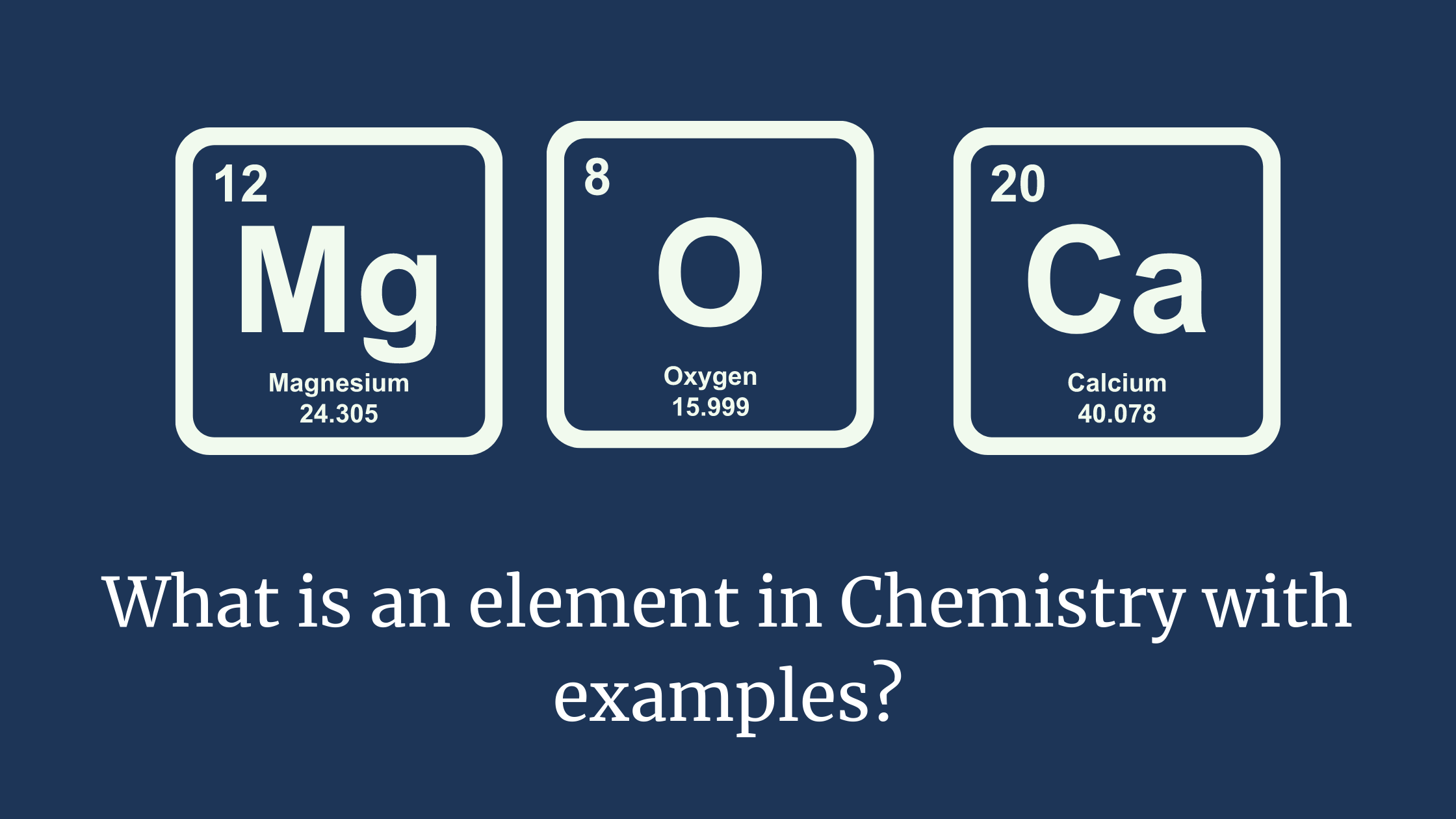
In this article, we will learn about what elements are along with examples. We will define chemical elements, learn about how many elements are there, and will discuss isotopes and allotropes during the course of our article.
Introduction
We all know about matter and its properties. Matter is defined as anything that takes up space and has mass. Air and water, sugar and sand, hydrogen and oxygen, etc. are a few examples of matter around us.
The matter is classified into two types:
- pure substances and
- mixtures.
Elements and compounds are formed from pure substances. Mixtures are combined physically, which can be separated back to original components.
Elements are the most basic and complete chemical substances. Each element refers to a specific periodic table entry. An element is a substance made up of only one type of atom. Each type of atom has the same number of protons, but there could be a different number of neutrons in the nucleus of the same element.
Isotopes are atoms of the same element with different numbers of neutrons. Protium, deuterium, and tritium, for example, are all isotopes of hydrogen.
Another example of an isotope is the element carbon. There are three main isotopes of carbon. Because their mass numbers are 12, 13, and 14, the three-carbon isotopes are known as carbon-12, carbon-13, and carbon-14, which are often abbreviated to 12C, 13C, and 14C.
Apart from isotopes, there exist allotropes of chemical elements. Elements can exist in various forms known as allotropes, but this does not change their chemical nature. Diamond, graphene, and graphite, for example, are pure allotropes of carbon elements.
What are Elements
A substance that cannot be broken down into another substance is referred to as an element. So we can say that an element is the simplest form of a pure substance.
The lightest element is hydrogen, which has one proton, followed by helium, which has two.
Definition of Element
The simplest form of a pure substance which can neither be decomposed into nor built from simpler substances by ordinary physical or chemical methods.
Every element is made up of atoms that are unique to that element. As a result, the chemical elements are all rather distinct from one another.
Each and every element has atoms with the same number of protons in their atomic nucleus. In other words, an element’s atomic number is the same for all of its atoms.
Everything in the universe is made up of chemical matter be it atoms or molecules of one or more elements. Atoms of various elements are building blocks of matter. Most of the matter in the universe is composed of chemical matter made up of these elements.
The periodic table is a list of all known elements that group elements that have similar properties together in a logical manner.
An element’s atoms cannot be split into smaller particles during a chemical reaction or by any chemical means. Nuclear reactions are the only way for elements to be broken down into subatomic particles.
Learn about the Most Abundant Element on Earth
Examples of Elements
Hydrogen, oxygen, nitrogen, Sulphur, iron, lead, gold, mercury, and other elements are common examples of chemical elements found in nature.
At the moment, approximately 118 elements are known. So far, 92 of these have been discovered to occur naturally, while the remaining have been prepared in the laboratory.
All of the elements do not occur in equal proportions in the earth’s crust. Ninety per cent of the earth’s crust is made up of about twenty elements.
Oxygen, silicon, aluminium, iron, calcium, sodium, potassium, hydrogen, chlorine, carbon, and other elements are the most abundant in the earth’s crust.
Types of Elements
Metals
About 80% of known elements are metals. Characteristics of metals are that they are
- generally solid at room temperature. Mercury is the only metal that is liquid at room temperature.
- bright lustrous
- hard
- able to conduct heat and electricity.
- generally malleable (can be beaten into thin sheets) and ductile (can be drawn into wires)
Some examples of metals include
- copper
- iron
- silver
- aluminium etc.
Apart from these we also have heavy metals. Heavy metals are metallic chemical elements that are toxic or poisonous in low concentrations.
Mercury (Hg), cadmium (Cd), arsenic (As), chromium (Cr), thallium (Tl), and lead (Pb) are just a few examples of heavy metals.
Non-metals
At room temperature, most nonmetals are gases and do not conduct electricity. At room temperature, a few nonmetals, such as carbon and sulfur, are solid.
These elements are generally
- non-lustrous
- brittle and poor conductor of heat and electricity
Some common examples of non-metals include
- carbon
- hydrogen
- oxygen
- nitrogen etc.,
Metalloids
These are elements that share properties with both metals and nonmetals. Metalloids include silicon, arsenic, bismuth, antimony, and other elements.
Frequently Asked Questions
Any substance that cannot be decomposed into simpler substances by ordinary chemical processes is called an element or chemical element.
There are currently 118 accepted elements.
A chemical compound is formed when two distinct elements are chemically combined for example when a chemical bonds is formed between their atoms.
Given below are 10 examples of elements
H – Hydrogen
He – Helium
Si – Silicon
N – Nitrogen
B – Boron
C – Carbon
Ca – Calcium
O – Oxygen
F – Fluorine
 Skip to content
Skip to content